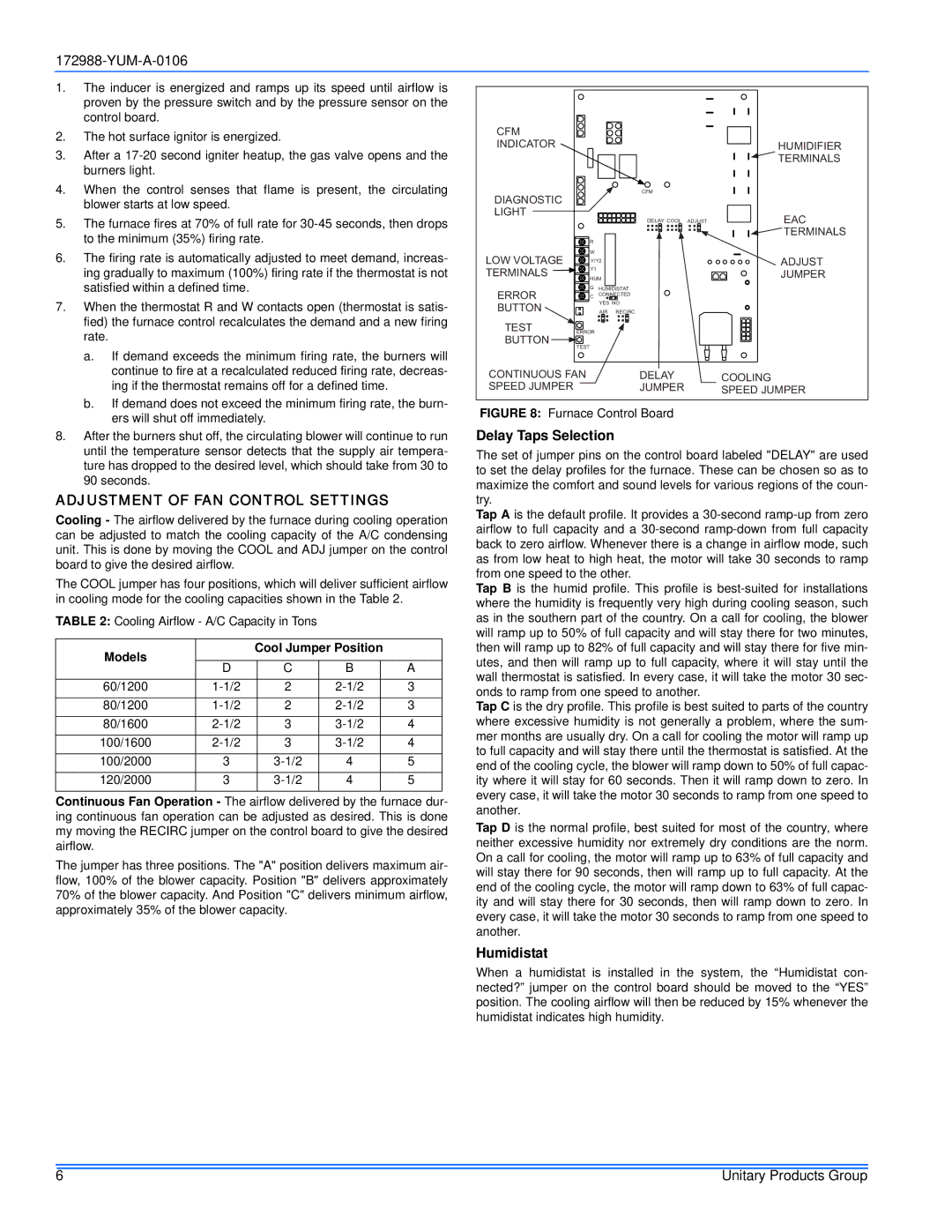PC9 specifications
The York PC9 is an advanced air conditioning system that has gained recognition for its efficiency and versatility in various applications. Specifically designed for both residential and commercial settings, it showcases a blend of innovative technologies, exceptional performance, and user-friendly features.One of the standout characteristics of the York PC9 is its energy efficiency. Utilizing cutting-edge inverter technology, the unit can adjust its cooling output according to the specific needs of the space. This not only ensures optimal comfort but also significantly reduces energy consumption compared to traditional HVAC systems. The inverter compressor operates at variable speeds, which minimizes energy usage during partial load conditions—a critical feature for achieving cost savings and sustainability.
The York PC9 is equipped with advanced air filtration systems that enhance indoor air quality. These systems typically include multi-stage filters capable of capturing allergens, dust, and other airborne particulates. This makes the unit an excellent option for users with allergies or respiratory concerns, as it promotes a healthier indoor environment.
In terms of smart technology, the York PC9 often integrates seamlessly with home automation systems. Users can control their air conditioning via mobile apps or voice commands, allowing for convenient adjustments from anywhere. The smart features typically include programmable scheduling, remote temperature monitoring, and diagnostic capabilities that alert users to potential maintenance needs.
Moreover, the design of the York PC9 is both compact and aesthetically pleasing, allowing it to blend effortlessly into various settings. Its robust construction ensures durability, with weather-resistant materials that stand up to the rigors of different climates.
Another noteworthy feature of the York PC9 is its quiet operation. The units are engineered to minimize noise levels, ensuring that they do not disrupt daily activities in both home and work environments. This makes the PC9 especially appealing for bedrooms or office spaces where a serene atmosphere is essential.
In summary, the York PC9 embodies modern air conditioning technology with its energy-efficient inverter system, advanced air filtration, smart connectivity, and low noise levels. Whether for residential usage or commercial applications, it stands out as a reliable choice that combines innovative features with superior performance, catering to a wide range of comfort needs.

